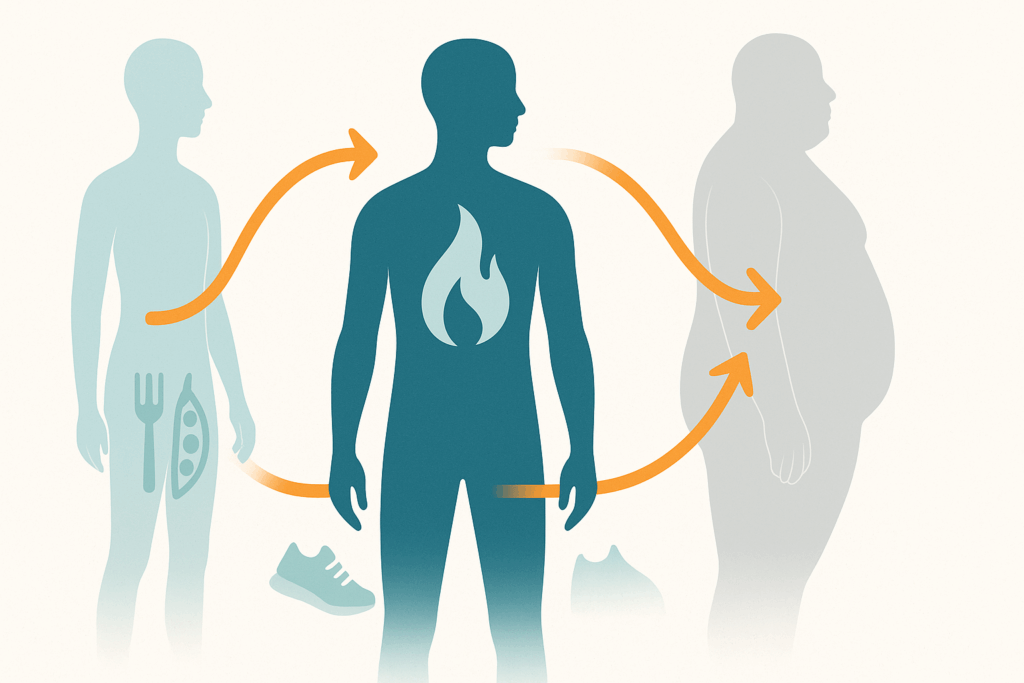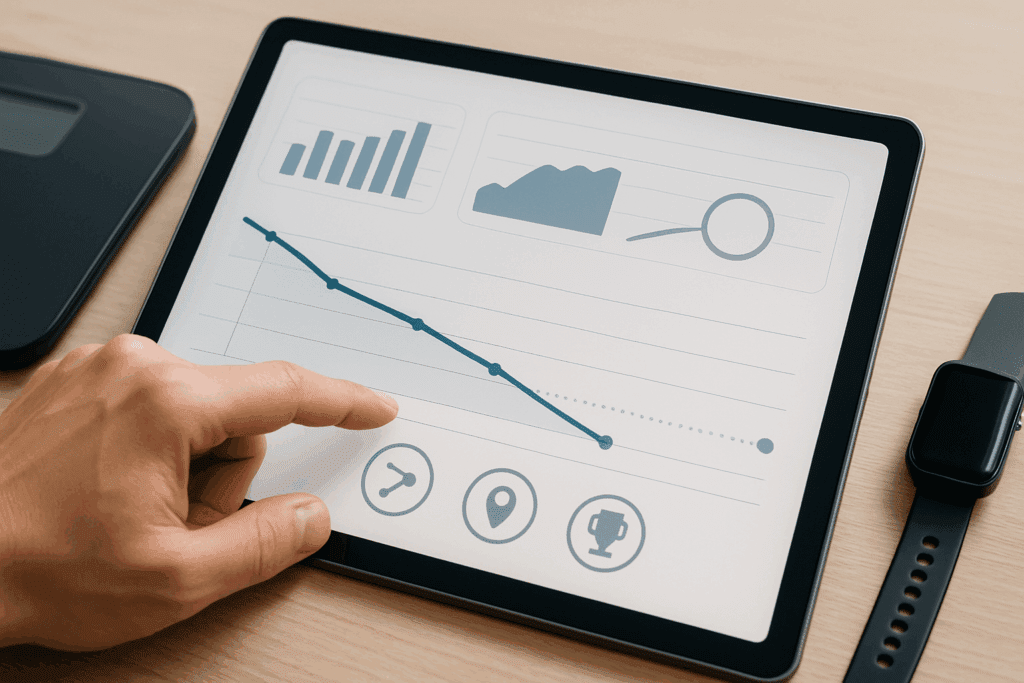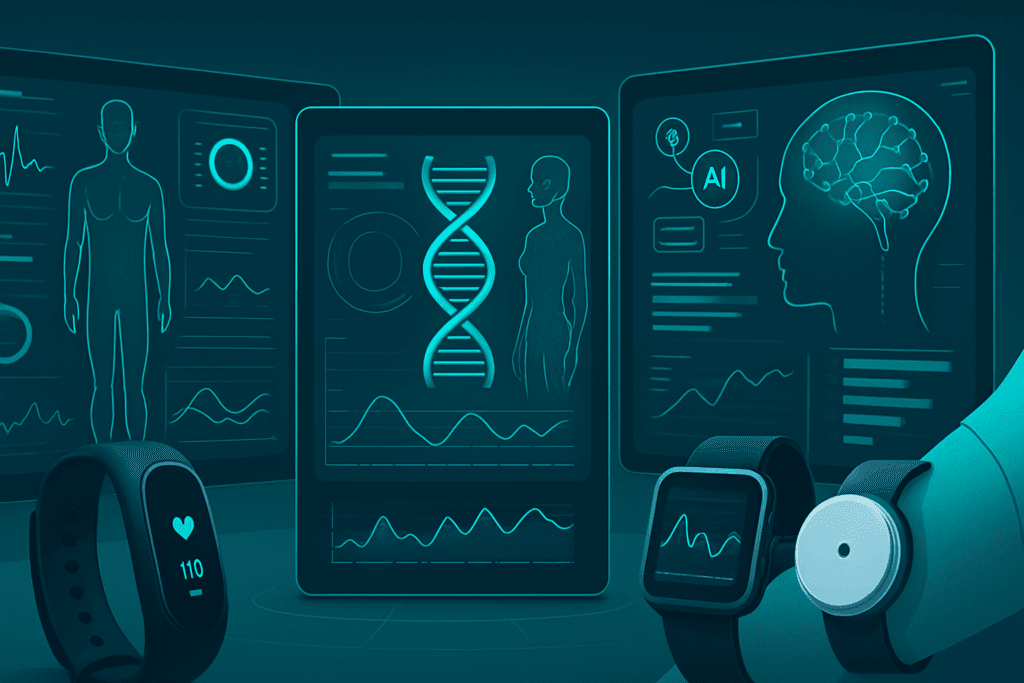In an era where digital health tools are evolving rapidly, individuals seeking sustainable weight loss solutions are increasingly turning to innovative technologies to guide and motivate their efforts. Among these tools, the weight loss simulator stands out as a transformative asset. Not merely a gimmick or marketing trick, a high-quality weight simulator combines data-driven projections, behavioral science, and medical knowledge to offer a visual and personalized forecast of weight loss progress. This powerful blend of science and technology holds immense promise for anyone striving to lose weight in a smart, healthy, and sustainable way.
You may also like: Expert-Backed Weight Loss Tips for a Healthier Lifestyle: What You Need to Know for Long-Term Weight Control and Wellness

Understanding the Purpose of a Weight Loss Simulator
A weight loss simulator is not a magic bullet, but rather a scientific tool rooted in metabolism, caloric balance, and behavioral modeling. These digital platforms typically use inputs such as current weight, height, age, gender, activity level, and dietary changes to predict how an individual’s body weight may change over time. The underlying algorithms are built on well-established metabolic equations that reflect the complex interplay between energy intake and expenditure.
For many people, the visual nature of a weight simulator makes abstract health goals more concrete. Instead of simply imagining what a 20-pound weight loss might feel like, users can visualize how their body might look and function at a lower weight. This immersive approach enhances motivation and commitment. Beyond aesthetics, some simulators also estimate health-related metrics, such as body mass index (BMI), estimated calorie needs, or projected risk reduction for chronic diseases. The more advanced simulators, often used by clinicians and registered dietitians, integrate behavioral feedback loops that track dietary patterns and suggest adjustments based on real-time progress.
Empowering Personalized Weight Loss Journeys
What makes a weight loss simulator particularly valuable is its capacity for personalization. Every person’s metabolic rate, genetic predisposition, hormonal profile, and lifestyle factors are unique. Generic diet plans that ignore this diversity are often ineffective and frustrating. A sophisticated weight simulator tailors projections and strategies to individual characteristics, providing a bespoke roadmap rather than a one-size-fits-all approach.
For example, two people following the same calorie-restricted diet may lose weight at different rates due to variations in resting metabolic rate, muscle mass, sleep quality, or even gut microbiota. A simulator that accounts for these variables helps users set realistic expectations and avoid the discouragement that often follows when predicted outcomes fail to align with actual results. Moreover, personalized simulations foster a sense of agency, empowering users to understand how their choices—such as increasing daily steps or substituting processed snacks for whole foods—can tangibly affect outcomes over time.

Enhancing Motivation Through Visual Feedback
One of the most compelling aspects of a weight loss simulator is its ability to provide real-time, visual feedback. This taps into basic principles of behavioral psychology, where tangible cues and immediate gratification are powerful motivators. By showing projected changes in body composition or appearance over time, the simulator reinforces healthy behaviors and encourages consistency.
Unlike static diet logs or numerical spreadsheets, weight simulators present progress in a visually engaging format, making the journey feel more real and less theoretical. This can be especially effective for individuals who struggle with abstract goal-setting or who require external reinforcement. Seeing simulated changes based on different choices—such as walking 30 minutes more each day or reducing sugar intake—can make lifestyle modifications feel more achievable and worthwhile. These visual cues also help build self-efficacy, or the belief in one’s ability to succeed, which is a well-documented predictor of long-term weight loss success.
Integrating Science and Medical Accuracy
Credible weight loss simulators are grounded in the best available science. Many rely on models developed by institutions such as the National Institutes of Health (NIH) or validated academic frameworks like the Hall model of energy balance. These models incorporate extensive physiological data to reflect how the body adapts to weight loss, such as reductions in metabolic rate or hormonal shifts that influence hunger and satiety.
Furthermore, reputable simulators are often reviewed or co-developed by experts in endocrinology, nutrition science, and behavioral medicine. This ensures that the projections offered are not only mathematically sound but also clinically relevant. Medical accuracy is essential in avoiding the promotion of unrealistic or unsafe expectations. For instance, some tools may caution users when a proposed weight loss timeline is too aggressive, highlighting the risks of muscle loss, nutrient deficiency, or metabolic slowdown. This evidence-based foundation reinforces the simulator’s role as a trustworthy guide rather than a speculative or promotional product.

Using a Weight Simulator for Goal Setting and Tracking
Goal setting is a cornerstone of any health behavior change, and a weight simulator enhances this process by turning vague intentions into specific, measurable objectives. Rather than setting an arbitrary goal like “lose weight,” users can define concrete outcomes—such as losing 15 pounds in three months—and explore the behavioral changes needed to reach them. The simulator then helps track these objectives through daily or weekly updates, allowing users to adjust their strategy as needed.
Tracking progress over time also enables pattern recognition. If weight loss stalls, the simulator can help identify whether this is due to changes in physical activity, dietary habits, or metabolic adaptation. This nuanced feedback encourages problem-solving rather than blame or defeat. Additionally, many simulators can sync with wearable devices, smart scales, or diet-tracking apps, integrating seamlessly into the user’s digital health ecosystem. This connectivity enhances engagement and provides a holistic view of wellness behaviors beyond weight alone.

Preventing Common Pitfalls in Weight Loss
Weight loss journeys are often fraught with challenges, including plateaus, relapses, and the temptation of fad diets. A well-designed weight loss simulator can help users navigate these obstacles more effectively. By providing data-informed predictions, the simulator reduces the allure of quick fixes and emphasizes the importance of consistency and patience.
For instance, if a user is tempted to try a highly restrictive diet that promises rapid weight loss, the simulator may show that while initial results might be fast, the long-term sustainability is poor and the risk of regaining weight is high. Conversely, gradual and realistic changes—such as modest caloric reductions combined with regular physical activity—may appear less dramatic at first, but the simulator illustrates how these choices yield lasting benefits over months and years. This visual evidence can reinforce adherence to evidence-based strategies and discourage impulsive decisions rooted in frustration or misinformation.
Improving Nutritional Awareness and Lifestyle Habits
A weight simulator can be a powerful educational tool, especially when it includes interactive elements related to food choices and meal planning. Some platforms allow users to input different meal combinations and observe how these affect daily caloric intake and long-term weight trajectories. This process promotes mindfulness and encourages healthier decisions, such as selecting fiber-rich vegetables over calorie-dense processed snacks.
Understanding how seemingly minor choices accumulate over time can shift a person’s mindset from deprivation to empowerment. For example, substituting a daily soda with water or herbal tea might not seem significant in isolation, but when visualized over a six-month period using a simulator, the cumulative impact on weight and health becomes clear. This kind of insight cultivates intrinsic motivation, helping users internalize the value of sustained, healthy habits over fleeting dietary restrictions.
Supporting Long-Term Wellness Beyond Weight Loss
While weight is a visible and measurable outcome, it is only one aspect of overall health. The best weight loss simulators integrate metrics that extend beyond the number on the scale, such as cardiovascular health, blood sugar control, cholesterol levels, and energy balance. By expanding the focus from weight loss to wellness, these tools help users develop a more holistic understanding of their health journey.
Incorporating additional markers of health also reduces the risk of becoming overly fixated on weight alone, which can lead to unhealthy behaviors or disordered eating. When users see that improving their diet and exercise habits positively affects energy levels, sleep quality, and mood—regardless of immediate weight changes—they are more likely to maintain these behaviors for life. This broader perspective also supports a more compassionate and self-affirming approach to health, where success is measured not just in pounds lost, but in vitality gained.
Encouraging Professional Collaboration and Accountability
Some of the most effective uses of a weight loss simulator occur within the context of professional support. Dietitians, fitness coaches, and primary care providers increasingly use these tools to enhance client education, foster accountability, and personalize treatment plans. By reviewing simulator data together, professionals and clients can have more informed, collaborative conversations about goals, obstacles, and progress.
Moreover, using a simulator in a clinical or coaching setting helps bridge the gap between expert guidance and daily behavior. It reinforces health literacy, allowing individuals to better understand concepts like caloric deficit, macronutrient balance, and energy expenditure. As patients become more engaged in their own health data, they are more likely to follow through on treatment recommendations and make empowered decisions.
The simulator also acts as a buffer against unrealistic expectations often perpetuated by social media or diet culture. With accurate modeling, a trained professional can show why a five-pound loss over two months is not a failure but rather a meaningful and medically appropriate achievement. This contextual understanding fosters long-term commitment and reduces the emotional burden associated with fluctuating weight.

Embracing the Future of Digital Health and Weight Management
As digital health technologies continue to advance, the capabilities of the modern weight loss simulator are evolving as well. Emerging tools are beginning to incorporate artificial intelligence, machine learning, and genomic data to further refine predictions and enhance personalization. Some simulators now provide adaptive feedback, learning from the user’s responses to tailor recommendations dynamically over time.
Wearable technology integration is also accelerating, allowing simulators to access real-time data from fitness trackers, sleep monitors, and continuous glucose monitors. This creates a comprehensive picture of the user’s physiological responses and behavioral patterns. In turn, simulators can offer more precise and timely suggestions, such as adjusting macronutrient intake based on stress-related changes in sleep or activity levels.
These innovations point toward a future where the weight simulator becomes an integral component of preventive care. Rather than reacting to disease or dysfunction, individuals and healthcare providers can proactively manage health through early interventions informed by predictive modeling. This represents a paradigm shift—from treating weight-related conditions to preventing them through personalized, data-driven strategies.
Frequently Asked Questions: How a Weight Loss Simulator Can Help You Reach Your Goals
1. How accurate are weight loss simulators in predicting real-world results? While no tool can predict outcomes with absolute certainty, a weight loss simulator often uses advanced metabolic models that reflect evidence-based projections. These models typically incorporate variables like basal metabolic rate, energy expenditure, age, and body composition to offer a fairly realistic trajectory. However, the simulator’s accuracy depends on the quality of the input data and consistency in behavior, which users must maintain. What sets some simulators apart is their capacity to adjust predictions dynamically when new data is introduced, making them more responsive over time. A high-quality weight simulator does not guarantee results but can significantly improve goal-setting accuracy and behavior forecasting.
2. Can a weight simulator adjust for hormonal changes, such as those from menopause or thyroid disorders? Most consumer-facing weight loss simulators do not yet fully account for complex hormonal fluctuations, though some are beginning to integrate variables like menopause or thyroid activity. These conditions can significantly affect weight gain or loss by influencing metabolic rate, appetite regulation, and fat distribution. While some professional-grade simulators used in clinical settings are tailored for such considerations, consumer platforms may require manual adjustments or professional interpretation. That said, emerging technologies are aiming to incorporate more endocrinological data for better personalization. If you have a hormone-related condition, it’s wise to use a weight simulator in conjunction with guidance from an endocrinologist or registered dietitian.
3. Is it possible to use a weight loss simulator to test multiple diet and exercise strategies at once? Yes, many advanced simulators allow users to create different scenarios and compare outcomes side-by-side. This comparative functionality enables users to explore how varying levels of carbohydrate intake, protein emphasis, or physical activity can influence weight outcomes over time. Some weight simulators provide graphs or overlays to illustrate which strategy may offer more sustainable progress based on user preferences and lifestyle. This feature promotes data-driven experimentation rather than trial-and-error in real life, saving time and reducing frustration. It also encourages more mindful, evidence-based decision-making in choosing the right combination of nutrition and exercise.
4. Can a weight loss simulator help prevent post-diet weight regain? A weight simulator can play an important role in helping users avoid the common pitfall of post-diet rebound. By showing gradual, long-term weight changes and emphasizing maintenance strategies, these simulators can guide users toward sustainable habits instead of temporary fixes. Some platforms include a “maintenance mode” that models how caloric needs change after significant weight loss. This helps users transition from a calorie deficit to equilibrium without regaining lost weight. Visualizing this transition can reduce anxiety and provide reassurance that slower, steadier change is both effective and sustainable.
5. How does a weight simulator support individuals with limited mobility or disability? Modern weight loss simulators increasingly accommodate users with limited mobility by allowing inputs for various types of physical activity, including seated workouts or aquatic therapy. Unlike older platforms that default to standard exercise metrics, newer versions let users model realistic scenarios based on their capabilities. A good weight simulator will consider lower energy expenditure and recommend dietary strategies to match the user’s mobility level. Some simulators even suggest tailored activity ideas for wheelchair users or individuals recovering from surgery. This inclusive approach helps ensure that everyone—regardless of physical ability—can set achievable and meaningful health goals.
6. Are weight simulators suitable for children or adolescents? While weight simulators can be educational tools for young people, they must be used with great care, particularly for those still growing. Many simulators are designed for adults and may not reflect the developmental needs of children or teenagers, such as growth spurts or hormonal milestones. Pediatric-specific platforms do exist and are typically used in clinical settings under supervision. A general weight loss simulator may not account for bone development, muscle growth, or psychological vulnerability related to body image. For this population, parental involvement and healthcare guidance are essential if a simulator is to be used responsibly.
7. What role does psychological readiness play when using a weight simulator? The psychological dimension of behavior change is often underestimated in digital tools, but it is crucial for long-term success. A weight loss simulator can help users visualize results, but if the user lacks emotional readiness or self-efficacy, the tool’s impact may be minimal. Advanced platforms now include features like goal-setting prompts, habit-tracking modules, and even mood journaling to address mental and emotional barriers. These additions support the emotional journey of weight loss, helping users manage frustration, setbacks, and unrealistic expectations. Incorporating mental health support enhances the simulator’s value beyond numbers and projections.
8. Can a weight simulator be used for weight gain goals, such as in underweight or muscle-building scenarios? While most are marketed for weight loss, many weight simulators can also model healthy weight gain, especially when used with flexible input features. For underweight individuals or those looking to increase muscle mass, the simulator can help forecast how incremental calorie surpluses and resistance training might influence body composition. Some platforms allow users to toggle between fat gain and lean mass gain scenarios, which is particularly useful for athletes or individuals recovering from illness. This dual functionality broadens the utility of the weight simulator beyond just weight reduction. It’s a helpful tool for clinical nutritionists and trainers managing diverse body composition goals.
9. How are social and cultural factors integrated into a weight simulator’s recommendations? Cultural food practices, socioeconomic status, and access to healthcare can all affect how a person approaches weight management. Most simulators do not yet deeply account for these variables, although a few newer models are starting to include regional food options or customizable meal templates based on cultural diets. Social determinants of health can influence the accuracy and accessibility of a weight loss simulator, especially in marginalized communities. Future innovations may offer more inclusive features, such as language support, cost-sensitive meal plans, and AI-informed personalization based on sociocultural identity. Recognizing these limitations is important when interpreting simulator data.
10. What future developments can we expect from next-generation weight simulators? The next wave of innovation in weight loss simulator technology is likely to incorporate artificial intelligence, wearable integration, and even genetic testing. AI can analyze trends across thousands of users to deliver more predictive, real-time feedback based on similar behavioral profiles. A future-ready weight simulator may pull data from continuous glucose monitors, heart rate variability devices, and sleep trackers to generate hyper-personalized insights. Some companies are exploring ways to integrate microbiome data and nutrigenomics, further refining dietary recommendations. These developments signal a shift toward deeply personalized, holistic weight management ecosystems powered by intelligent simulation tools.
Final Thoughts: Why a Weight Loss Simulator Is More Than Just a Digital Tool
At its core, a weight loss simulator is far more than a novelty or high-tech gadget—it is a bridge between science, behavior, and personal transformation. By offering realistic projections, personalized guidance, and continuous motivation, a weight simulator empowers individuals to take ownership of their health in ways that are informed, sustainable, and deeply human.
The true strength of a weight simulator lies in its ability to turn abstract concepts into tangible action plans. It takes the mystery out of weight loss, replacing guesswork with insight and speculation with strategy. For anyone navigating the often overwhelming landscape of nutrition and wellness, this tool can serve as a compass, helping them stay the course amid distraction and doubt.
Whether you are just beginning your journey or seeking to refine your current approach, the right weight loss simulator can provide the clarity, support, and encouragement needed to reach your goals. In a world where misinformation is rampant and quick fixes abound, choosing evidence-based, medically accurate tools like a weight simulator is a testament to both self-care and scientific integrity. It is, ultimately, a step toward a healthier future built not on promises, but on possibilities.
Further Reading:
How Do You Set Weight Loss Goals?
How To Set Healthy Weight Loss Goals
Use Our Weight Loss Calculator to Determine Your Daily Calorie Goal to Lose Weight


